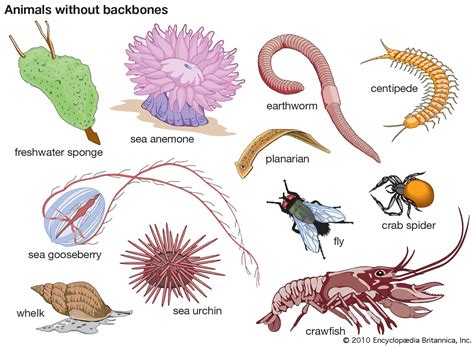Understanding the Importance of Conservation
The aquarium fish and invertebrate trade thrives on the exploitation of wild populations. Approximately 90% of all marine aquarium fish are sourced from the wild. This unsustainable practice has led to the decline of numerous species and disrupted marine ecosystems.

Wild-Caught vs. Captive-Bred
Wild-caught fish and invertebrates:
- Face higher mortality rates during capture and transport.
- Carry diseases that can spread to captive populations.
- Contribute to the depletion of wild stocks.
Captive-bred fish and invertebrates:
- Provide a sustainable alternative to wild-caught specimens.
- Reduce the pressure on wild populations.
- Ensure genetic diversity.
Conservation Strategies for 2025
In order to protect aquarium fish and invertebrate populations, it is crucial to implement comprehensive conservation strategies.
-
Establish marine protected areas: Designate areas where fishing and other extractive activities are prohibited to safeguard marine habitats.
-
Promote captive breeding: Encourage the development of captive breeding programs to reduce reliance on wild-caught specimens.
-
Enact sustainable fishing practices: Implement regulations to minimize the impact of fishing on wild populations, such as size limits and closed seasons.
-
Educate the public: Raise awareness about the importance of conservation and encourage responsible aquarium keeping practices.
Benefits of Conservation
Conserving aquarium fish and invertebrate populations offers numerous benefits:
-
Preservation of biodiversity: Protects species from extinction and maintains the genetic integrity of aquatic ecosystems.
-
Economic stability: Supports the aquarium fish and invertebrate trade by ensuring the availability of healthy specimens.
-
Scientific research: Provides opportunities for studying marine biology and understanding the impacts of climate change on aquatic species.
-
Cultural significance: Preserves the cultural and recreational value associated with aquarium keeping.
Case Detail: The Decline of the Banggai Cardinalfish
The Banggai cardinalfish (Pterapogon kauderni) is a popular aquarium species native to Indonesia. However, overfishing and habitat destruction have led to a 90% decline in its population. Conservation efforts, including marine protected areas and captive breeding programs, are underway to save this species.
Tips and Tricks for Responsible Aquarium Keeping
- Choose captive-bred specimens whenever possible.
- Restock your aquarium gradually to avoid overstocking.
- Provide a suitable environment with proper filtration, aeration, and lighting.
- Quarantine new additions to prevent the spread of disease.
- Feed your aquarium fish and invertebrates a nutritious and varied diet.
- Monitor water quality regularly and perform water changes as needed.
FAQs
1. Why is aquarium fish and invertebrate conservation important?
– To protect species from extinction and preserve biodiversity.
2. What are the benefits of captive breeding?
– Reduces pressure on wild populations, ensures genetic diversity, and provides a sustainable alternative to wild-caught specimens.
3. What can I do to help conserve aquarium fish and invertebrates?
– Choose captive-bred specimens, support conservation organizations, and educate others about the importance of responsible aquarium keeping.
4. What is the future of aquarium fish and invertebrate conservation?
– Implementation of sustainable fishing practices, establishment of marine protected areas, and increased public awareness are crucial for the future of these species.
Market Insights
The global aquarium fish and invertebrate market is projected to reach $15.2 billion by 2025. Captive-bred specimens are gaining popularity due to their lower mortality rates and reduced environmental impact.
Table 1: Wild-Caught vs. Captive-Bred Aquarium Fish and Invertebrates
| Characteristic | Wild-Caught | Captive-Bred |
|---|---|---|
| Mortality rate | Higher | Lower |
| Disease risk | Higher | Lower |
| Contribution to wild population depletion | Yes | No |
| Sustainability | Unsustainable | Sustainable |
Table 2: Benefits of Aquarium Fish and Invertebrate Conservation
| Benefit | Importance |
|---|---|
| Preservation of biodiversity | Protects species from extinction and maintains genetic integrity. |
| Economic stability | Supports the aquarium fish and invertebrate trade by ensuring the availability of healthy specimens. |
| Scientific research | Provides opportunities for studying marine biology and understanding the impacts of climate change on aquatic species. |
| Cultural significance | Preserves the cultural and recreational value associated with aquarium keeping. |
Table 3: Tips for Responsible Aquarium Keeping
| Tip | Importance |
|---|---|
| Choose captive-bred specimens | Reduces pressure on wild populations and ensures genetic diversity. |
| Restock your aquarium gradually | Prevents overstocking and maintains water quality. |
| Provide a suitable environment | Ensures the health and well-being of aquarium fish and invertebrates. |
| Quarantine new additions | Prevents the spread of disease. |
| Feed your aquarium fish and invertebrates a nutritious and varied diet | Promotes health and growth. |
| Monitor water quality regularly and perform water changes as needed | Maintains a healthy environment for aquarium fish and invertebrates. |
Table 4: FAQs About Aquarium Fish and Invertebrate Conservation
| Question | Answer |
|---|---|
| Why is aquarium fish and invertebrate conservation important? | To protect species from extinction and preserve biodiversity. |
| What are the benefits of captive breeding? | Reduces pressure on wild populations, ensures genetic diversity, and provides a sustainable alternative to wild-caught specimens. |
| What can I do to help conserve aquarium fish and invertebrates? | Choose captive-bred specimens, support conservation organizations, and educate others about the importance of responsible aquarium keeping. |
| What is the future of aquarium fish and invertebrate conservation? | Implementation of sustainable fishing practices, establishment of marine protected areas, and increased public awareness are crucial for the future of these species. |





















